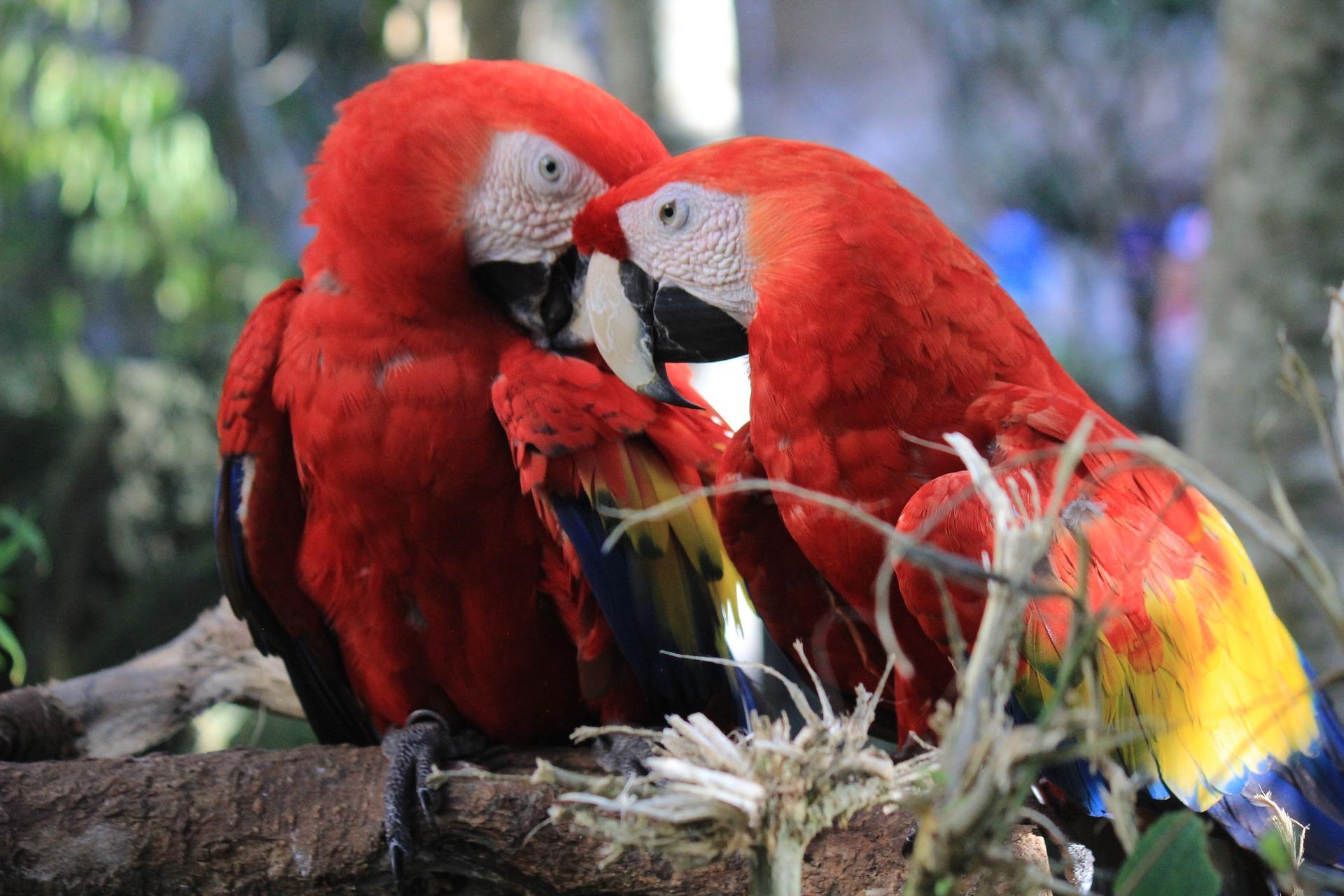When someone asks, “How do birds mate?” they’re often searching for a clear, natural explanation of how these creatures so graceful and free manage reproduction without the anatomy humans associate with mating. The short answer is this: most birds mate through a process called the “cloacal kiss,” where the male and female briefly touch their cloacas (reproductive openings) to transfer sperm. But beyond this simple biological fact lies a remarkable story of dance, song, timing, and trust an intricate choreography that defines bird life across every ecosystem on Earth. Bird mating is not only a physical act; it’s a ritual of communication, instinct, and survival. From the soft trills of a nightingale to the flamboyant strut of a peacock, every species performs a unique sequence of gestures and displays meant to attract, bond, and ensure the continuation of their kind.
To understand how birds mate is to look closely at nature’s balance between elegance and biology where beauty and practicality converge. This article explores in detail how birds court, copulate, and care for their young, unpacking the science behind one of the most fascinating aspects of animal life.
Key Stages in Bird Mating and Their Purpose
| Stage | Description | Purpose | Example Species |
|---|---|---|---|
| Courtship | Songs, dances, displays, nest building | Attract a mate, signal fitness | Peacock, Robin |
| Pair Bonding | Forming emotional and behavioral connection | Strengthen trust and coordination | Swans, Albatross |
| Copulation (Cloacal Kiss) | Physical mating contact | Transfer of sperm | Most bird species |
| Fertilization | Sperm meets egg internally | Initiate embryo development | All birds |
| Nesting & Egg Laying | Building nests and laying eggs | Protect offspring | Sparrows, Eagles |
| Incubation | Keeping eggs warm until hatching | Embryo development | Penguins, Doves |
| Chick Rearing | Feeding and protection | Survival of young | Pigeons, Owls |
A Hidden Act Beneath the Feathers
In the natural world, bird mating remains one of the most discreet yet vital processes. Birds, unlike mammals, rarely display their mating in public view. For them, privacy is protection. Their physical anatomy lightweight, compact, and streamlined for flight demands efficiency even in reproduction. Unlike humans or most mammals, birds do not possess external reproductive organs. Instead, both male and female birds have a cloaca, a multi-purpose opening used for excretion and reproduction. During mating season, the cloaca swells slightly, allowing for the quick and delicate “cloacal kiss” a brief contact lasting less than a second in some species, but long enough to transfer millions of sperm. Yet, before that fleeting moment occurs, a dramatic ritual unfolds filled with color, song, and subtle intelligence.
Courtship: The Prelude to Mating
Bird courtship is one of the most visually and acoustically stunning spectacles in nature. Before any physical contact occurs, birds engage in elaborate displays of attraction. These rituals serve several evolutionary functions: to prove health, showcase strength, demonstrate loyalty, and establish compatibility.
1. Songs and Calls
Male songbirds, such as nightingales or canaries, use intricate songs to advertise their presence and genetic fitness. A strong, complex melody suggests a healthy bird with good territory and vitality.
2. Plumage Displays
Peacocks fan their iridescent tails not out of vanity but evolution. The large, symmetrical eyespots indicate genetic health, while their display communicates confidence and dominance.
3. Dances and Movements
Species like cranes, albatrosses, and manakins perform choreographed dances—synchronized steps, wing flutters, and head bows that communicate rhythm and coordination.
4. Food Offerings
Some birds, such as terns or kingfishers, engage in courtship feeding, where a male offers a captured insect or fish as a gift. This behavior signals his ability to provide for offspring.
Examples of Bird Courtship Rituals
| Species | Courtship Display | Symbolic Meaning |
|---|---|---|
| Peacock | Feather fanning and vibrating tail | Health and beauty |
| Albatross | Beak tapping and synchronized dancing | Lifelong bonding |
| Bowerbird | Building decorated bowers | Creativity and skill |
| Robin | Singing early morning songs | Territory and stamina |
| Kingfisher | Presenting food gifts | Provision ability |
| Crane | Elaborate pair dances | Coordination and devotion |
Pair Bonding: The Emotional Connection
Once the courtship succeeds, the next phase is pair bonding a crucial step for species that practice monogamy or long-term partnerships. Birds such as swans, albatrosses, and eagles are renowned for forming lifelong bonds. These pairs communicate through mutual preening, synchronized movements, and joint nest-building. Such rituals reinforce emotional trust, ensuring both partners cooperate during nesting and chick rearing.
In contrast, some species like sparrows or pigeons form seasonal bonds, mating only for a single breeding cycle. Evolution tailors bonding styles to survival strategies. Where cooperation is necessary for chick survival, bonding is stronger; where independence prevails, brief unions suffice.
The Act of Mating: The Cloacal Kiss
The physical act of mating among birds is brief, efficient, and often unseen. Since birds lack external genitalia, copulation occurs when the male and female press their cloacas together, transferring sperm from male to female.
How It Happens:
- The male mounts the female’s back carefully, balancing on her wings or shoulders.
- Both birds position their tails to allow cloacal contact.
- The cloacal kiss occurs lasting a fraction of a second.
- The male dismounts, and the sperm begins its journey inside the female’s reproductive tract.
The simplicity of the act belies its precision. In many species, timing is crucial the female may only be fertile for a short window, and successful transfer requires perfect alignment.
Exceptions: Birds with Penises
Though rare, about 3% of bird species possess a penis, mainly waterfowl (like ducks) and flightless birds (like ostriches). Evolutionarily, these species developed penises to cope with aquatic or high-risk mating environments, where the cloacal kiss might fail. The penis in such birds is not like a mammalian organ; it’s a spiral, flexible structure made of lymph fluid rather than blood. In water, this adaptation ensures successful sperm transfer despite movement or turbulence.
Fertilization and Egg Formation
After mating, sperm travels up the female’s oviduct, fertilizing an egg within minutes to hours. The egg, now containing a developing embryo, moves through layers of protective material albumen (egg white), membranes, and the hard shell.Each stage is meticulously designed by evolution to ensure protection, nourishment, and survival. Once the egg is fully formed, it’s laid into a prepared nest where incubation begins.The female’s body is a marvel of timing; she can store sperm for weeks, allowing for multiple eggs from a single mating session.
Nesting: Architecture of Parenthood
Nest building is a shared act of love, design, and protection. Some birds construct intricate woven structures from grass and twigs; others use mud, feathers, or even spider silk. Each nest reflects a balance between safety, insulation, and camouflage.
- Weaver birds create hanging baskets that sway safely above predators.
- Swallows mold clay nests under roofs or cliffs.
- Penguins stack pebbles into small mounds.
The nest is not just a nursery it’s a reflection of instinctual intelligence passed through generations.
Nest Types and Their Builders
| Nest Type | Description | Common Builders |
|---|---|---|
| Cup Nest | Bowl-shaped, made of grass | Robins, Thrushes |
| Cavity Nest | Built inside tree holes | Woodpeckers, Owls |
| Ground Nest | Simple depression in soil | Ducks, Plovers |
| Platform Nest | Flat stick arrangement | Eagles, Herons |
| Hanging Nest | Suspended from branches | Weaver birds, Orioles |
Incubation and Parental Care
Once eggs are laid, incubation begins. Both parents in many species take turns keeping eggs warm, while others, like penguins, rely primarily on the male.The average incubation period ranges from 10 days in small birds to over 70 days in large ones. During this time, embryos develop under precise conditions temperature, humidity, and rotation matter deeply.After hatching, chicks emerge blind and helpless (in altricial species) or nearly independent (in precocial ones). Feeding, teaching, and protection dominate the parents’ focus.Parental care varies dramatically: while pigeons feed their young with “crop milk,” seabirds may travel hundreds of miles to deliver food.
Monogamy and Fidelity in Birds
Birds are often romanticized as symbols of loyalty and rightly so. About 90% of bird species form monogamous bonds, at least during breeding seasons. Swans, albatrosses, and cranes can stay together for life, renewing bonds through annual rituals. However, monogamy in birds doesn’t always mean exclusivity. DNA studies show that “extra-pair copulations” are common nature’s way of increasing genetic diversity while preserving cooperative parenting.
The Role of Seasons and Hormones
Bird mating cycles are controlled by photoperiods the length of daylight and by environmental cues like temperature and food availability. Longer days trigger hormonal changes, leading to breeding readiness. Males experience a surge in testosterone, stimulating courtship behavior and song production. Females’ estrogen levels rise, preparing their bodies for egg production. This synchronization ensures that chicks hatch when conditions are optimal for survival typically spring or early summer.
Communication During Mating Season
Communication in birds during mating season becomes complex, multidimensional, and constant. It’s a blend of vocal, visual, and behavioral signals.
- Songs define territory and attract mates.
- Body postures convey readiness or rejection.
- Feather displays exaggerate movement to draw attention.
In social species like parrots, mutual grooming strengthens pair trust, while in solitary raptors, screech calls and flight displays signal dominance and courtship interest.
Bird Communication Methods During Mating
| Type of Communication | Function | Example Species |
|---|---|---|
| Song | Attraction, territory marking | Nightingale, Finch |
| Dance | Pair bonding, display | Crane, Manakin |
| Feather Display | Visual attraction | Peacock, Bird of Paradise |
| Food Offering | Trust and readiness | Tern, Kingfisher |
| Mutual Preening | Bond strengthening | Swans, Parrots |
Unique Mating Behaviors in the Avian World
Nature’s diversity ensures that no two species mate exactly alike. Some birds take creativity to astonishing levels:
- Bowerbirds build art installations, decorating with shells and berries to impress females.
- Birds of Paradise perform acrobatic dances, displaying iridescent feathers in complex sequences.
- Gannets greet with gentle bill fencing a ritual reaffirming lifelong devotion.
These behaviors are not random they’re part of evolutionary storytelling, where the best display wins survival.
Challenges in Modern Bird Mating Patterns
Human activity is disrupting natural mating rhythms. Urban light pollution confuses migratory signals. Habitat loss reduces nesting spaces. Chemicals interfere with hormonal cycles. Some species, such as sparrows and cuckoos, are adapting to cities, altering songs to overcome noise pollution. Others face declining populations because mating calls no longer carry across fragmented forests. The delicate timing of avian reproduction once guided by millennia of natural rhythm is now being rewritten by modern landscapes.
Evolutionary Significance of Bird Mating
Bird mating systems have evolved for one reason: to optimize reproductive success. From cooperative parenting to competitive courtship, every gesture serves survival.
- Monogamy ensures chick care and safety.
- Polygamy maximizes genetic diversity.
- Elaborate displays attract fitter mates.
Over time, this has led to extraordinary species diversity and specialization in mating strategies proof of evolution’s quiet genius.
Future of Bird Reproduction: Science and Conservation
Scientists today are exploring avian reproduction in conservation programs, using artificial incubation and genetic studies to save endangered species. By understanding mating patterns, researchers can simulate ideal conditions for breeding in captivity. As climate change alters ecosystems, adaptability in mating behaviors will determine which species endure. Protecting these rituals is not just about saving birds it’s about preserving the balance of natural communication and renewal.
Conclusion
They do it through grace, instinct, and precision by aligning timing, trust, and biology in perfect harmony. From the silent cloacal kiss to the resonant song of courtship, bird mating is a masterpiece of natural engineering and emotional intelligence. Every feather ruffle, every call, and every dance step contributes to the continuity of life. What seems invisible to us is, in truth, one of the most profound and poetic expressions of existence.
FAQs
1. Do birds mate for life?
Some do species like swans and albatrosses form lifelong bonds, though many birds are seasonally monogamous.
2. How long does bird mating last?
Most copulations last only a few seconds, though courtship can span days or weeks.
3. Do birds enjoy mating?
Birds mate by instinct, not emotion. However, bonding behaviors like preening show emotional connection.
4. Can birds reproduce without mating?
No. Eggs laid without fertilization are infertile and cannot hatch into chicks.
5. Why do male birds sing before mating?
Songs attract females and mark territory. A complex, sustained song signals health and genetic quality.











